As laser-processing systems continue to evolve, distributors and end-users can expect equipment and process modifications such as increased power densities, motion-control advancements, and material handling improvements.
These changes will greatly influence process parameters and gas-supply needs.
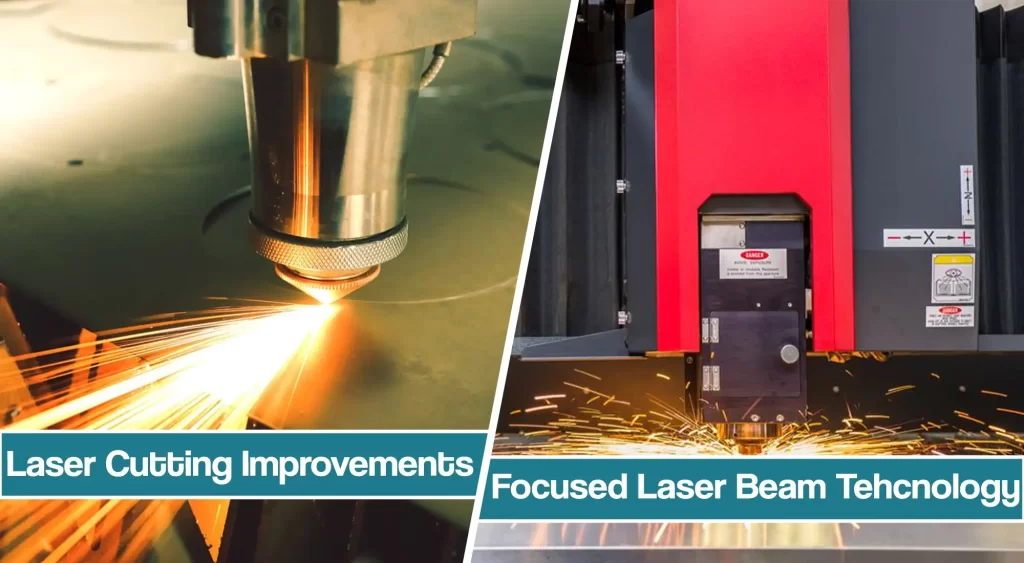
This article will overview the laser cutting improvements that regard the power, speed, and economics of the process.
Laser Cutting Improvements – Laser Power
New technologies have impacted the laser-cutting process and laser cutting machines. Four to 10kW lasers have been available for some time, but with poor beam quality, optical limitations, and expensive equipment and operation costs. Recently though, 4 to 6-kW, high-frequency, excited (HF) machines have made cutting a viable and cost-effective option.
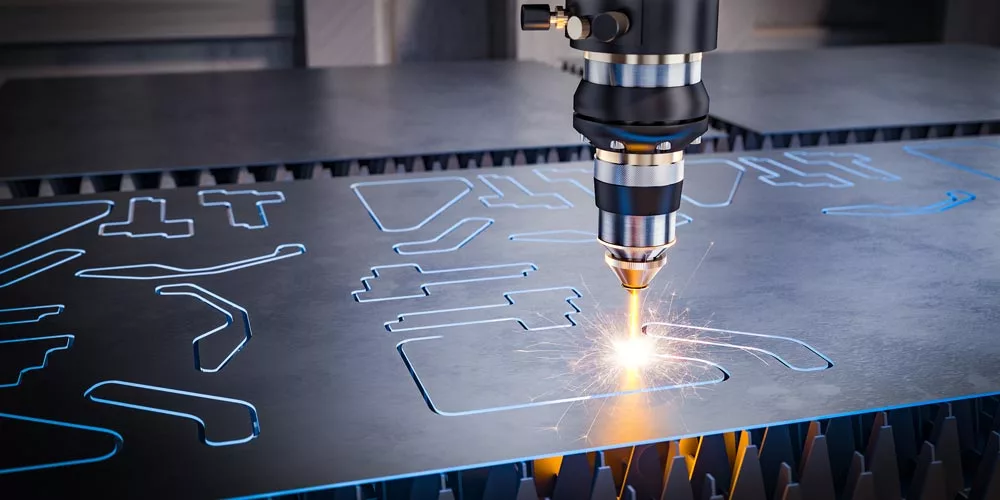
One HF laser advancement is a design that ensures the anode and cathodes are not in contact with the laser gases. This produces a consistently clean lasing process. As a result, HF machines have good laser beam quality with high power density, quality pulse control, and an economical cost per watt.
The higher power of HF solid-state lasers lets end users effectively cut carbon, coated, and stainless steel and aluminum with high-pressure nitrogen. Nitrogen in the cutting is an important change in laser and assist-gas technology.
Assist Gas Improvements
Historically, oxygen was the assist gas for carbon-steel cutting. An exothermic reaction between the liquefied iron and oxygen provides a substantial portion of the heat required to cut steel. But, oxygen assist gas oxidizes the cut surface, and the heat generated can distort the workpiece material and remove surface coatings. Nitrogen minimizes many of these cutting challenges because it makes a cooler process.
Nitrogen also increases processing speed and produces oxide-free cut surfaces with little or no removal of surface materials.
Laser Cutting Speed
Laser cutting speeds with nitrogen are directly related to laser technology power density, metal thickness, and assist-gas pressure and flow. The gas lets end-users sheet metal cutting applications at very high cutting speeds with better edge quality, little or no surface deterioration, and less distortion. This holds true for mild steel thicknesses up to 0.15 in.
When cutting thicker materials and steels, distributors and end-users will find the heat from the oxygen/liquid iron combination produces faster cutting speeds.
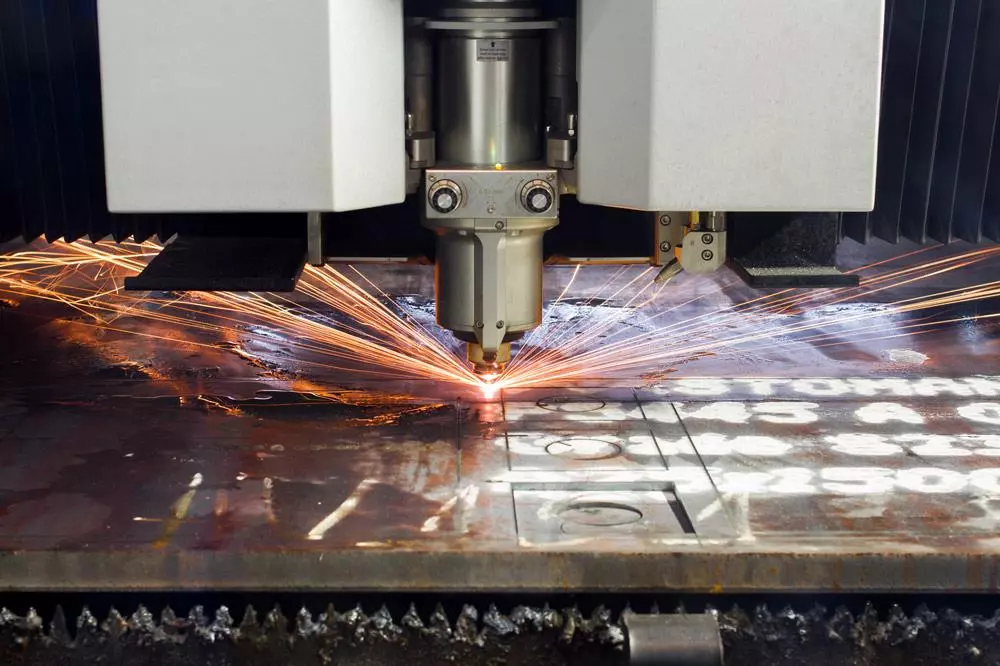
In some cases, the best results come from using multiple gases to optimize performance across a wider range of materials.
In addition to these changes, the laser industry is also improving fiber laser-system speeds thanks to motion-control technology. In fact, some high-power density machines now exceed 100 ft/min. In years past, a ball screw or rack-and-pinion system handled motion control, but maintaining high tolerances and repeatability at high process speeds became difficult. Incorporating linear motors solved this problem. They provide tight system control, repeatability, and high speed.
Economics of Assist Gases and Laser Cutting Equipment
Simple economics drove the third progression in laser systems — automated material handling. Such systems employ dual pallets, ball transfer load stations, semiautomatic loaders, and fully automated loaders/unloaders. For instance, a multi-pallet automated load/unload cell operates in a lights-out operation with little to no human intervention.
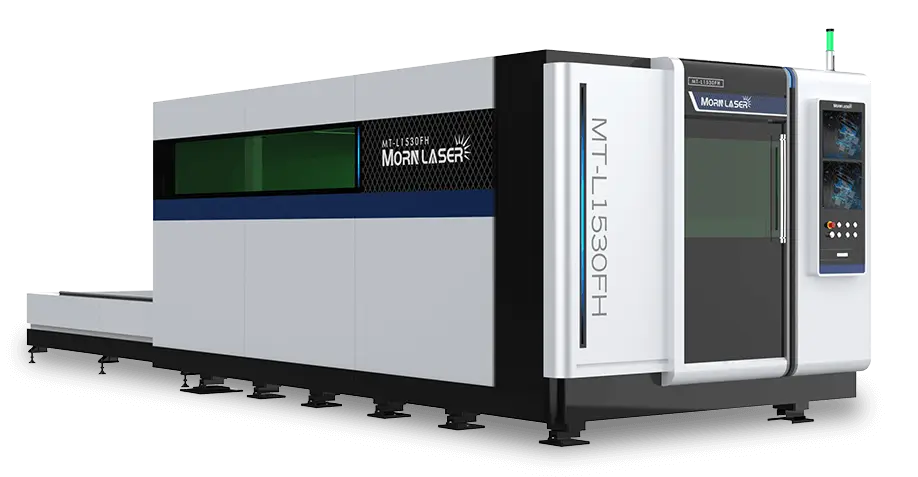
Combining these types of automated material handling with more powerful lasers ensures 75%-plus duty cycles, high beam-on time, and the economic viability of laser systems.
The assist-gas requirements for advanced laser systems commonly exceed the parameters of the traditional gas supply systems. For example, the required assist-gas pressures can exceed 400 PSI (26.5 bar). Flows greater than 5,000 SCFH (131 Nm 3 ) are required for certain laser cutting material thicknesses. Figure 1 shows an estimate of cutting speed material thickness and gas pressure for cutting with nitrogen as the assist gas. The travel speed decreases as material thickness increases; however, assist-gas pressure increases significantly. The pressure and the laser cutting nozzle diameter determine the gas flow rate, and the nozzle diameter and assist-gas flowrate increase with thickness. Thus, the greatest flows — and usually the higher pressures — correspond to the greatest thickness processed.
For the gas distributor and customer, gas volume consumed in a month is a third critical factor in selecting a gas supply system. With average gas consumption, the distributor, along with the customer, must consider peak consumption and pressure, distribution schedules and costs, equipment costs, future growth expectations, and safety stocks.
Selecting Suitable Gas Supply System in Laser Cutting process
The selection of a suitable gas supply system requires knowledge of the maximum assist-gas pressure, the peak flow rate, and the monthly volume of gas consumed, which can be determined by answering questions about the process. Laser cutter output power, material and thickness to be cut, percent of maximum thickness to be processed, numbers of hours of operation, duty cycle, and a number of lasers (fiber lasers), figure into the calculations.
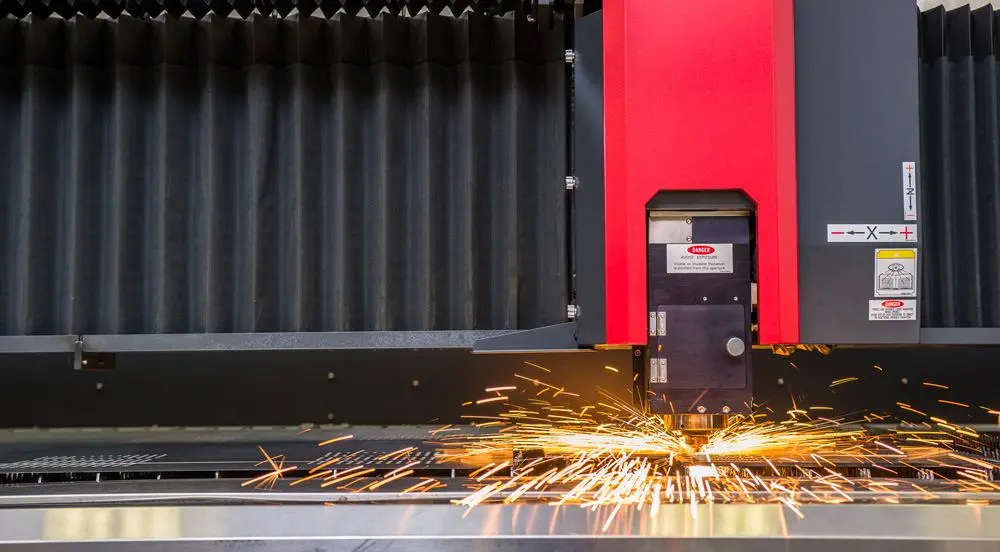
Gas supply mode in laser cutting machine changes monthly volume and flow rate. Once the figures are determined, a system can be chosen with a degree of certainty.
Many potential gas supply solutions provide a variety of pressures and flow for given monthly volumes. In reality, each system has a broader range of operations than depicted.
However, different factors make one system more effective than another in a given application. Gas distributors and users should seek guidance from gas-equipment manufacturers to understand the nuances of each system.
Laser Cutting Carbon Steel
Laser cutting carbon steel with oxygen as the assist gas is typically a low-pressure (150 PSI and lower) and low-flow (less than 1,000 SCFH) application. For example, gas supply systems commonly start with Dura-Cyls liquid cylinders, either exchanged full-for-empty or manifold together and move to an on-site Perma-Cyl or bulk tank.
Pressure or flow requirements do not greatly tax the gas system for these applications.
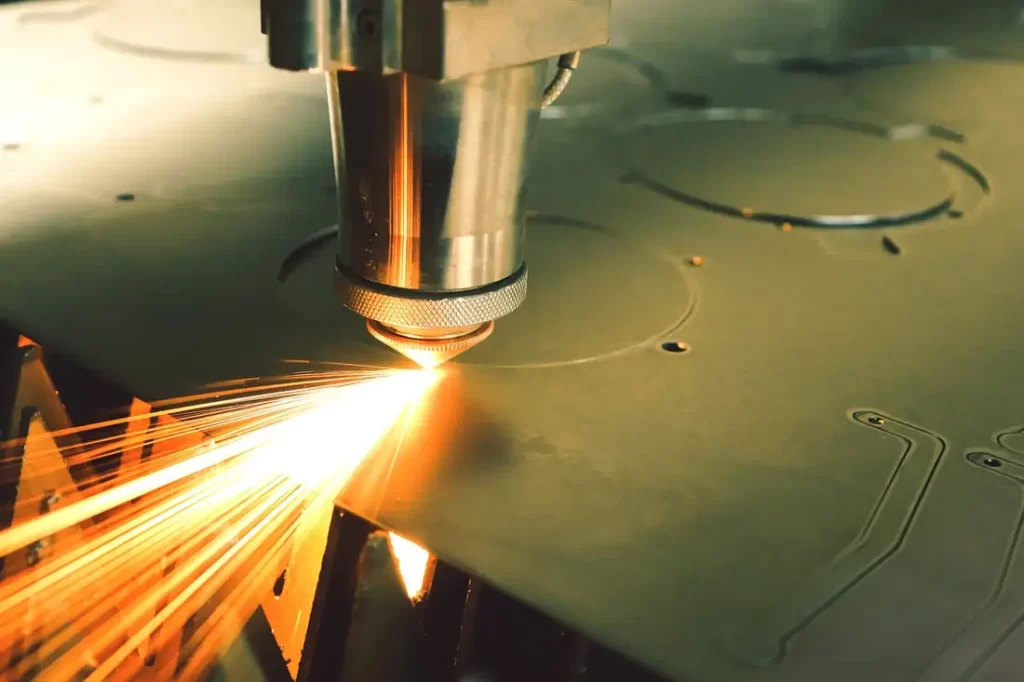
Consider monthly volume and routine system operating costs as key factors for low-pressure and low-flow applications.
A clean laser cutting process with nitrogen as the assist gas usually requires higher gas pressures (200 PSI and greater) to evacuate the cut zone or kerf of molten material and doesn’t affect the same material quality. A pressure of 200 PSI limits the thickness of material that can be cut to about 0.100 in.
For thicker material laser cutting, higher pressure-liquid systems meet individual gas supply requirements. These high or very high-pressure systems include portable liquid cylinders, such as the Laser-Cyl, and stationary systems, such as the Perma-Cyl VHP, high-pressure bulk tanks, Trifecta, and the HP 2 integrated system. All these deliver assist gases higher than 450 PSI with net-storage capacities and operating features.
Bulk Gas Systems in Laser Cutting Process
Bulk-gas systems become most economical once a laser-cutting facility’s volume reaches a certain point. Only two bulk solutions existed until recently — the traditional high-pressure bulk station or Trifecta system combined with a standard-pressure bulk tank.
The HP 2 system is a valuable laser-cut option. The capabilities of these high-pressure gas systems vary, so it is important to choose one that meets the customer’s needs.
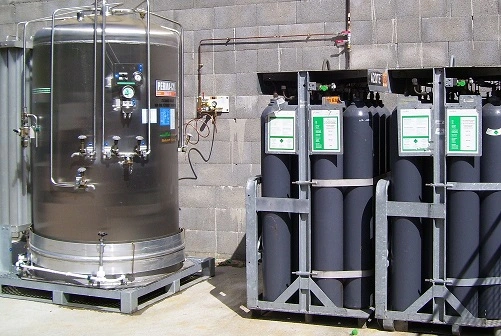
Traditional high-pressure bulk tanks have been the historical workhorse for laser applications such as fusion cutting, but this is changing. This is because it can’t sustain the increasing flow rates and pressures for advanced laser systems and the requirements of laser cutting machines.
In addition, uninterrupted service is not possible because of the time required to blow down, refill, and re-pressurize the tank for filling — a major drawback for laser shops working toward maximum beam-on times. Limited net-fill capacities, difficulties in holding and regulating peak pressures, and unwanted vent losses also make the high-pressure bulk tank less desirable for laser applications.
Distributors are finding other solutions for providing bulk assist-gas in the laser machine. Connecting the Trifecta, for instance, to a standard-pressure bulk tank lets end users operate without boost pumps to raise the downstream house-line pressure to the level lasers need. The bulk tank acts as a reservoir to feed low-pressure liquid (typically 50 to 200 PSI) to the Trifecta. It supplies sustained flowrates up to 15,000 scfh at pressures up to 450 PSI.
The Trifecta also provides an uninterrupted supply of high-pressure assist gas to the laser with little wasted product. Refilling the bulk tank is done without taking it off-line, which interrupts cutting. The Trifecta supplies facilities with uninterrupted gas and gas distributors with a standard-pressure bulk tank.
The HP 2, a new, fully integrated gas supply system, consists of a specially designed high-pressure bulk tank, control module, and multifunction high-pressure vaporizer. Using technology developed and tested over a two-year period, the HP 2 supplies pressures and flow rates up to 490 PSI and 12,500 SCFH.
The heat-management technology provides capabilities found in no other system, including reduced vent losses, pressure-building times reduced from hours to minutes — for example, 100 to 450 PSI in less than 10 minutes — increased net-fill capacities, and reduced out-of-service times for filling. In addition, laser facilities requiring uninterrupted service during the complete filling process can install an optional fill-assist unit.
Summing Things Up
The laser system has become a mainstay as a cutting tool in metal fabrication. Advancements in laser cutting tools have caused other related adaptations.
One example is the gas supply system. The higher pressures and flows associated with high-powered faster laser systems have necessitated the development of economical gas solutions capable of providing uninterrupted sources of high-performance assist gas.






